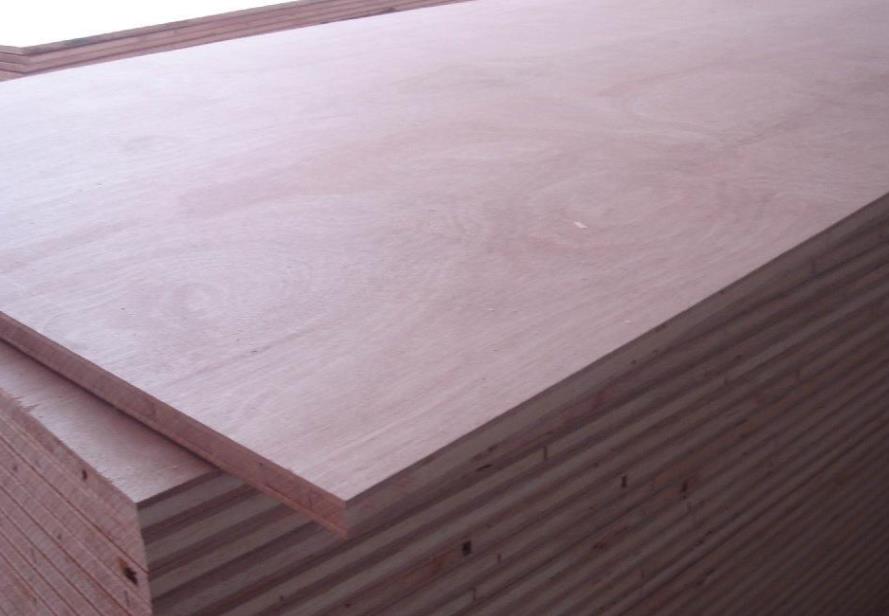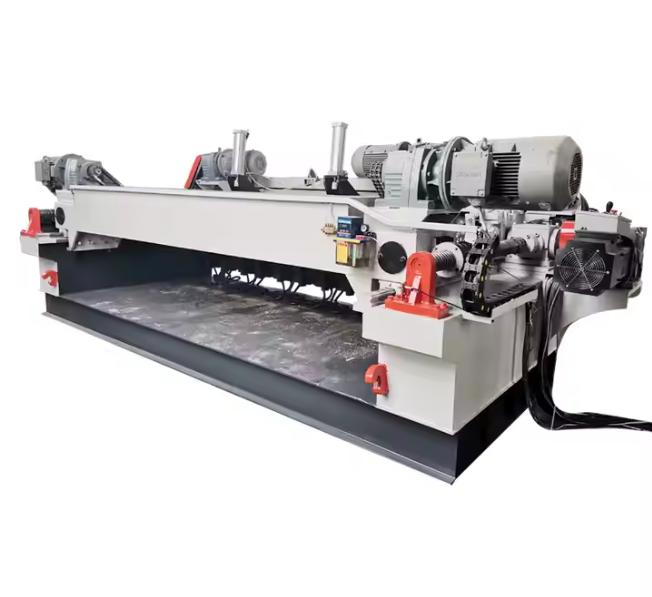Rotary cutting machine is one of the key equipment for producing plywood. It can process wood segments of a certain length and diameter into continuous veneer strips for the production of plywood, particleboard, and other artificial board veneers. Choosing the appropriate rotary cutting machine is crucial for improving production efficiency and ensuring product quality. Here are some key factors and considerations to help you make wise choices among numerous rotary cutting machines.

Consider the type of rotary cutting machine. Rotary cutting machines are mainly divided into card rotary cutting machines and card free rotary cutting machines. The card rotary cutting machine is suitable for large-diameter wood, while the card free rotary cutting machine is more suitable for small-diameter wood. In addition, according to the driving mode of the main motion, the rotary cutting machine can also be divided into spindle drive type and outer circle drive type. The spindle drive type can be divided into mechanical card type and hydraulic card type according to different card structures. Among them, the hydraulic double card shaft rotary cutting machine has a high degree of automation, easy operation, small wood core diameter, high board output rate, and good single board quality, mainly used in large and medium-sized enterprises. The wood segments in the cardless rotary cutting machine are centered and driven by friction rollers, with the smallest diameter of the wood core and the highest plate yield, mainly used for re rotary cutting of the wood core. You need to determine the most suitable type based on production needs and wood specifications.
Secondly, pay attention to the technical parameters of the rotary cutting machine. The main technical parameters of the rotary cutting machine are the maximum length and diameter of the wood segment that can be processed, as well as the rotary cutting thickness. Different rotary cutting machine models have different processing ranges, and you need to ensure that the selected rotary cutting machine can meet the maximum wood segment length and diameter required for production. Meanwhile, the selection of rotary cutting thickness is also crucial, as it directly affects the quality and cost of the product. When selecting, it is necessary to comprehensively consider material properties, usage requirements, and production efficiency to ensure that the rotary cutting thickness can meet market demand and product quality standards.
Assess the quality and performance of the rotary cutting machine. A high-quality rotary cutting machine should have stable and reliable performance, high-precision processing capability, and a long service life. You can evaluate the quality of the rotary cutting machine by examining the manufacturer's qualifications, professional technical advantages, product manufacturing processes, and user evaluations. In addition, it is also very important to understand the after-sales service situation of the rotary cutting machine, so that any problems encountered during use can be resolved in a timely manner.

Consider the price and cost-effectiveness of the rotary cutting machine. When choosing a rotary cutting machine, price is undoubtedly an important consideration factor. However, it is important not to blindly pursue low prices while neglecting the quality and performance of the rotary cutting machine. You need to comprehensively evaluate the price, quality, performance, and after-sales service of the rotary cutting machine, and choose the rotary cutting machine that best suits your production needs.
Choosing a suitable rotary cutting machine for plywood production requires consideration of multiple factors, including the type of rotary cutting machine, technical parameters, quality and performance, as well as price and cost-effectiveness. By comprehensively understanding and evaluating these factors, you will be able to find the most suitable rotary cutting machine for your production needs, thereby improving production efficiency, ensuring product quality, and reducing production costs.
 What is the yield rate of eucal
What is the yield rate of eucal
01 January,1970
 What is the Veneer Drying Equip
What is the Veneer Drying Equip
01 January,1970
 How to evaluate the production
How to evaluate the production
01 January,1970
 How to maintain the wood veneer
How to maintain the wood veneer
01 January,1970
 New glue technologies for plywo
New glue technologies for plywo
01 January,1970
 Working Principle of Wood Spind
Working Principle of Wood Spind
01 January,1970